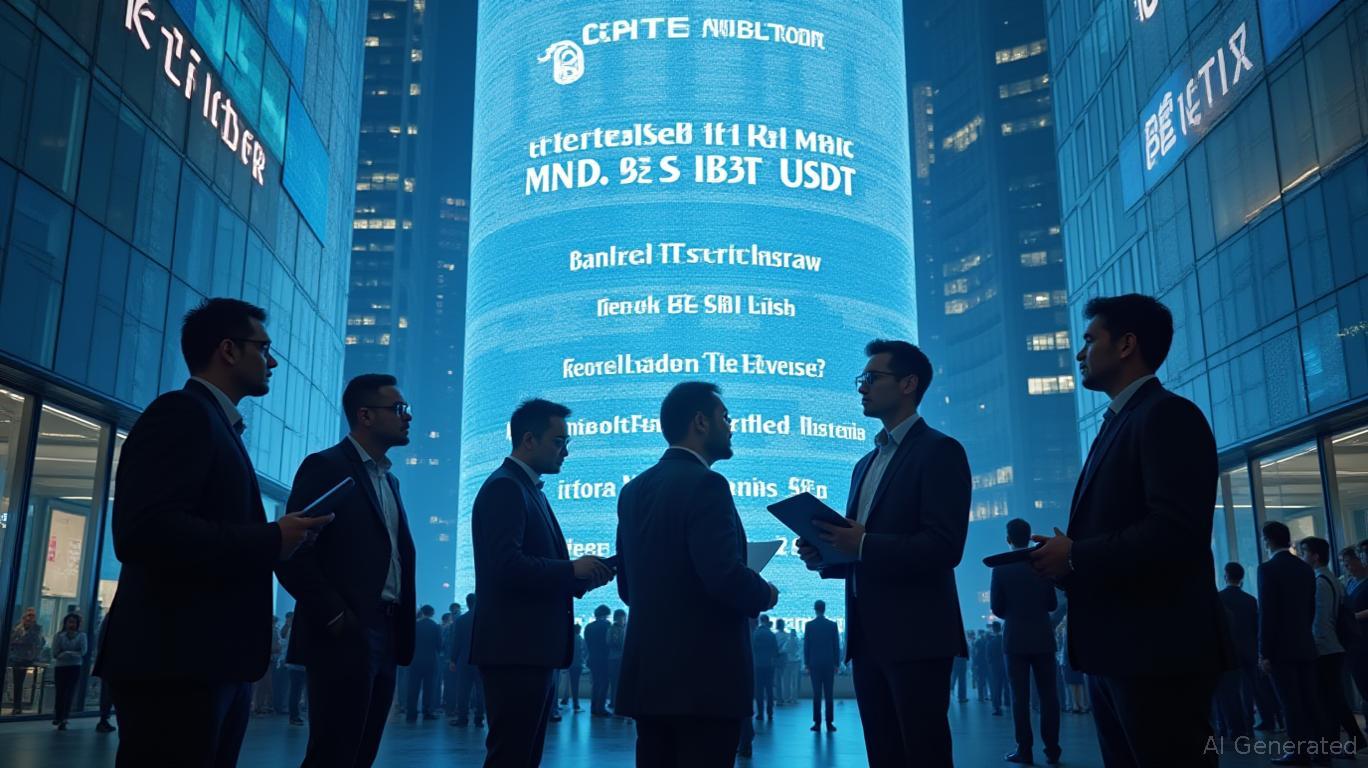AInvest Newsletter
Daily stocks & crypto headlines, free to your inbox
Tether, the world’s largest stablecoin with a market cap exceeding $157 billion, has once again found itself in the spotlight, this time for reasons that have raised significant concerns within the crypto community. An on-chain analyst has highlighted several potential red flags that could have serious implications for the crypto markets if left unaddressed.
One of the most alarming developments is the recent minting of $2 billion worth of USDT on the Tron network. According to the analyst, these tokens were labeled as “authorized but not issued,” meaning they were created but not yet released into circulation. This move is seen as a preemptive measure to handle potential market volatility, particularly if large redemptions occur during a sell-off. By having this pre-minted stash, Tether can quickly release these tokens to maintain stability if investors rush to cash out their crypto into USDT or redeem USDT for dollars.
Another major concern is the lack of a full independent audit of Tether’s reserves. Tether claims that every USDT is backed 1:1 by real assets such as cash, U.S. Treasury bills, and short-term investments. However, no full independent audit has been released to verify these claims. In 2021, the New York Attorney General found that Tether had misrepresented its reserves and fined the company $18.5 million. Despite promises of greater transparency, many in the community remain skeptical and fear that a hidden reserve gap could lead to a collapse.
Regulatory pressure from Europe is also adding to the scrutiny. Under the MiCA regulation, stablecoins like Tether must be licensed, hold 60% of reserves in EU banks, maintain full transparency, and fall under EU supervision. Tether’s failure to comply with these regulations has led to its delisting from major exchanges such as Binance and Kraken for European users. This regulatory block limits USDT’s access to a significant market and raises questions about its global sustainability.
If Tether were to collapse, the consequences could be severe. Tether dominates over 62% of the stablecoin market volume, and a sudden depeg from $1 could cause massive redemptions, freeze exchange withdrawals, and lead to DeFi protocol failures. This could trigger a chain reaction similar to the collapses of FTX or Terra. Potential triggers for a USDT breakdown include a court order freezing assets, losing banking partners, or solid proof that reserves do not exist. Any of these events could spark a panic-driven bank run on Tether.
In light of these concerns, analysts have suggested alternatives to Tether. USDC, which is U.S.-regulated and regularly audited, and DAI, which is decentralized and overcollateralized, are seen as safer bets. However, USDT still holds dominant liquidity, especially in Asia and emerging markets, making it difficult to replace unless a disaster strikes.
While Tether is not collapsing today, the risk is real. The crypto community should stay alert and diversified, especially during volatile cycles where trust in stablecoins is crucial. As the analyst warns, “It will happen suddenly—when it happens.”

Quickly understand the history and background of various well-known coins

Dec.02 2025

Dec.02 2025

Dec.02 2025

Dec.02 2025

Dec.02 2025
Daily stocks & crypto headlines, free to your inbox
Comments
No comments yet